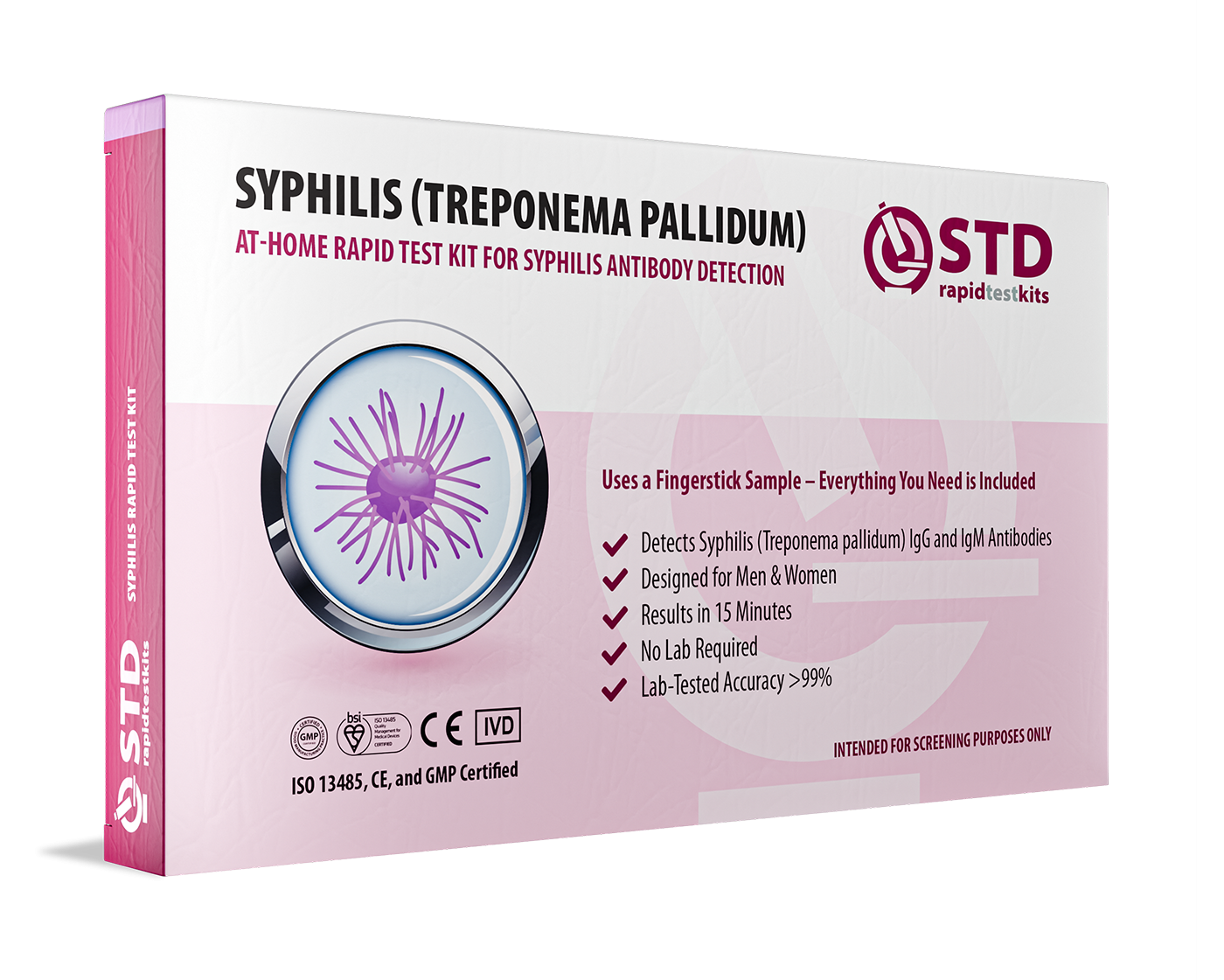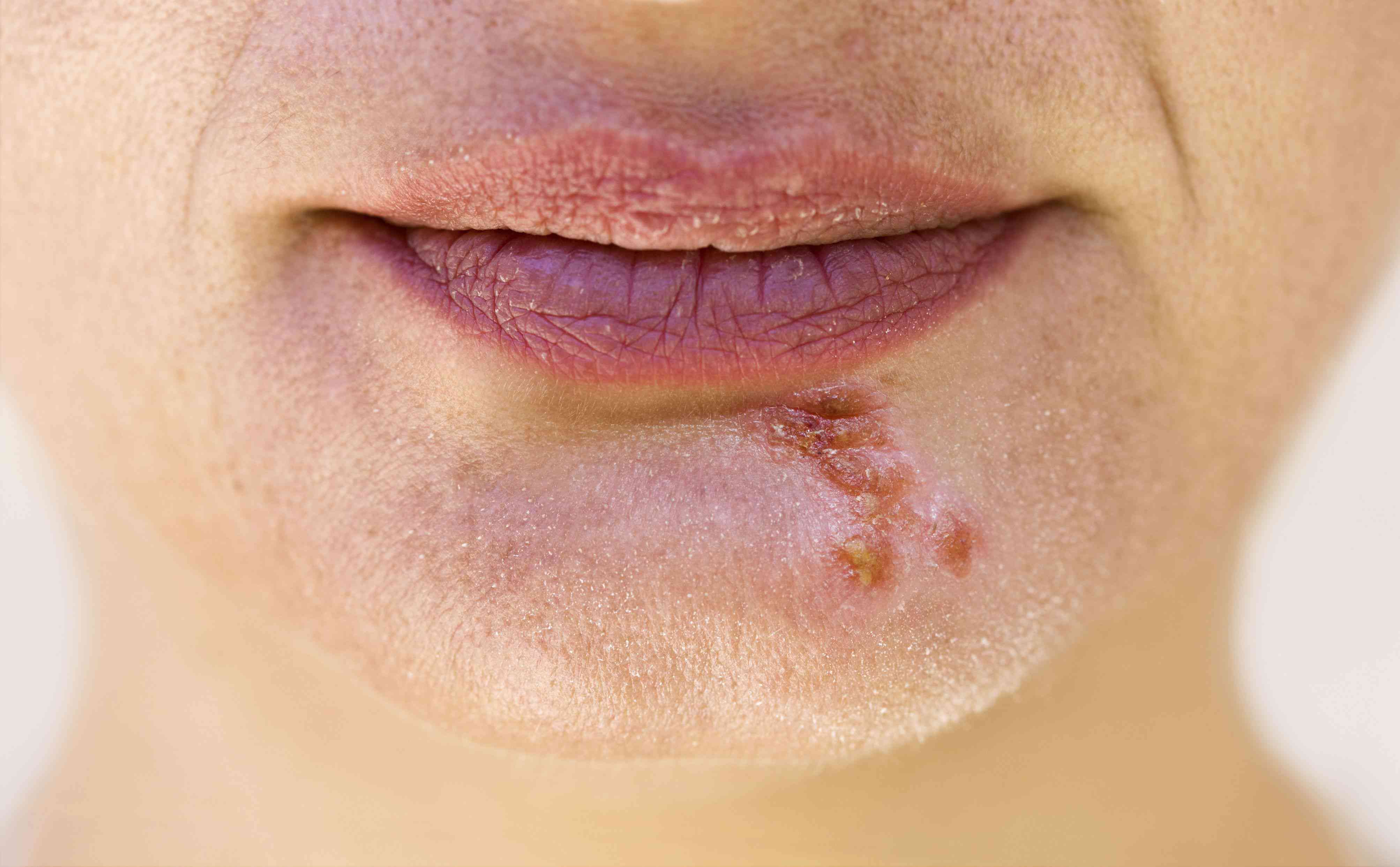Quick Answer: Oral STDs like gonorrhea, chlamydia, syphilis, and herpes can infect the throat and linger for days to months if untreated. Some clear on their own, but others persist silently. Treatment usually clears symptoms within days, but without testing, you might not even know it’s there. Don’t wait to feel something. Get tested to know.
How Oral STDs Infect the Throat
The throat (pharynx) is lined with delicate mucosal tissue that’s highly susceptible to infection. During oral sex, whether you’re giving or receiving, this tissue can be exposed to bacteria or viruses through saliva, semen, or skin contact.
Common oral STDs include:
- Gonorrhea: thrives in the throat, especially among people who perform oral on penises or anuses
- Chlamydia: less common in the throat, but still possible through oral-genital contact
- Syphilis: can cause ulcers or spread via broken skin or mucous membranes
- Herpes (HSV-1 or HSV-2): can cause oral sores and shed even when no visible outbreak is present
All of these can stay in your throat long enough to transmit to a partner and possibly spread deeper into your system if untreated.

People are also reading: Rimming, Licking, and Lurking STDs: The Oral Risks No One Talks About
Oral Gonorrhea: How Long Can It Last?
Untreated throat gonorrhea can last for weeks to months. Some studies show the infection can persist up to 12 weeks or longer in the pharynx without symptoms. But it’s not harmless, it can inflame the throat, increase HIV risk, and become antibiotic resistant.
Treatment: A single dose of ceftriaxone usually clears it within 3–7 days.
Symptoms (when present):
- Sore throat or redness
- Swollen lymph nodes
- Burning sensation while swallowing
- Bad breath or no symptoms at all
But here’s the kicker: most people with oral gonorrhea feel nothing at all. That’s why site-specific testing (throat swab) is so important if you’ve had oral sex with someone new or whose status is unknown.
Oral Chlamydia: Rare but Persistent
Chlamydia in the throat is less common than gonorrhea, but when it shows up, it can stick around for 2–3 months if untreated. It’s usually acquired from performing oral sex on someone with penile or vaginal chlamydia.
Treatment: A 7-day course of doxycycline is the gold standard and clears most infections.
Symptoms (rare):
- Scratchy or sore throat
- Mild inflammation
- Sometimes mistaken for allergies or a cold
Even though it’s uncommon, oral chlamydia can be transmitted back during kissing, rimming, or sex. It’s often missed because few people ask for throat swabs when they test.
Syphilis in the Mouth and Throat: More Than a Sore
Syphilis can infect the mouth or throat during oral sex, especially when open sores or broken skin are involved. It often appears in the form of a painless ulcer (chancre), usually around the tonsils, lips, or tongue.
How long it lasts untreated: A syphilitic sore can last 3–6 weeks and disappear on its own, but the infection doesn’t. It moves on to secondary stages, attacking internal organs if not treated.
Treatment: One dose of penicillin G benzathine (early stages) clears it quickly. Later stages may require multiple doses.
Symptoms of oral syphilis:
- Painless ulcer or sore in the mouth or throat
- Swollen lymph nodes
- Hoarseness or trouble swallowing
Don’t wait for symptoms. Syphilis can be active and contagious long before you feel a thing, and it’s one of the easiest STDs to cure when caught early.
Check Your STD Status in Minutes
Test at Home with RemediumSyphilis Test Kit

 For Men & Women
For Men & Women Results in Minutes
Results in Minutes No Lab Needed
No Lab Needed Private & Discreet
Private & DiscreetOrder Now $33.99 $49.00
Oral Herpes: Lifelong and Often Silent
Oral herpes (HSV-1 or HSV-2) can infect the throat during oral sex or kissing. Unlike bacterial STDs, herpes is viral and remains in your body for life, even when symptoms fade.
How long it lasts:
- Initial outbreak: 1–2 weeks of painful sores
- After healing: virus goes dormant, but can reactivate
Shedding can occur without symptoms, which means you can pass herpes even if you don’t have a visible sore. This includes oral-to-oral (kissing) and oral-to-genital (blowjob) transmission.
Antiviral treatment: Daily meds like valacyclovir can reduce outbreaks and lower risk of transmission.
Most people with oral herpes never get diagnosed, because the virus hides until stress, illness, or hormonal shifts trigger symptoms. Still, even “silent” infections can be passed on.
Real Stories: What Survivors Say About Lingering Oral STDs
We spoke to readers, hotline callers, and anonymous sources about how long their oral STDs lasted, and what surprised them the most. Here's what they said:
“I thought it was strep throat. Three weeks later, I was still coughing. Turns out it was gonorrhea. I never even knew it could be in the throat.” – Jordan, 26
“I had no symptoms, but my hookup messaged me after their test came back positive. I got tested and had chlamydia in my throat. No clue how long I had it.” – Sam, 20
“The worst part wasn’t the sore. It was being treated like I deserved it. I just wanted answers. A nurse finally tested my throat after I begged.” – Naya, 31
Survivors consistently reported frustration with doctors who skipped throat testing, clinics that downplayed risk, and the shame of navigating silent infections.
How Long After Oral Sex Should You Get Tested?
Timing matters. If you test too early, some infections may not show up yet. If you wait too long, you risk spreading the infection, or dealing with complications.
Recommended testing windows for oral STDs:
- Gonorrhea & Chlamydia: 1–2 weeks after exposure
- Syphilis: 3–6 weeks after exposure (blood test)
- Herpes: Blood tests can detect antibodies after 4–6 weeks; swabs work best during an active sore
For people who give or receive oral sex regularly with new or multiple partners, every 3 months is a smart baseline for testing. And always request a throat swab, many clinics don’t include this by default.

People are also reading: Do Condoms Actually Protect Your Mouth? Let’s Talk Barriers and Blowjobs
Why Throat Swabs Are Often Skipped, And Why That’s a Problem
Most standard STD tests use urine samples or genital swabs. But oral STDs won’t show up unless you swab the throat directly. Here’s why many clinics skip it:
- They assume you didn’t have oral sex
- You didn’t specifically request it
- Insurance limitations or time constraints
This means thousands of people walk away from testing thinking they’re “clean”, while an infection lingers in their throat. If you’ve had oral sex, always ask: “Can you add a throat swab to my test?”
Oral STD Symptoms vs. Common Throat Illnesses
Oral STDs are often mistaken for:
- Strep throat
- Allergies or post-nasal drip
- Tonsillitis
- Smoking or vaping irritation
But here’s how to tell something might be off:
- Symptoms don’t respond to antibiotics or over-the-counter meds
- Swollen glands without a cold or flu
- Oral ulcers or sores that return
- Sexual exposure within the last 2–8 weeks
If you’ve had oral sex and your throat symptoms persist, don’t settle for “just allergies.” Get tested with a site-specific swab.
How Fast Does Treatment Work for Oral STDs?
Once diagnosed, oral STDs usually clear quickly with the right antibiotics or antivirals, but only if you get the full course and follow up:
- Gonorrhea: 1 injection; clears in 3–7 days
- Chlamydia: 7 days of doxycycline; symptoms may fade in 2–5 days
- Syphilis: 1–3 penicillin injections, depending on stage
- Herpes: Ongoing management with antivirals; no cure
Do not resume oral sex until at least 7 days after treatment ends. Reinfection is common if your partner doesn’t get treated too.
Check Your STD Status in Minutes
Test at Home with Remedium7-in-1 STD Test Kit

 For Men & Women
For Men & Women Results in Minutes
Results in Minutes No Lab Needed
No Lab Needed Private & Discreet
Private & DiscreetOrder Now $129.00 $343.00
For all 7 tests
Can You Spread Oral STDs by Kissing?
Yes, but not all of them. Herpes and syphilis can be passed through kissing, especially if sores or broken skin are present.
Gonorrhea and chlamydia transmission via kissing is rare, but recent studies show transmission is possible.
Don’t share toothbrushes, razors, or lip products during outbreaks, and be honest with partners if symptoms arise. There’s nothing shameful about protecting each other.
Can You Tell If It’s Oral Gonorrhea Just by Looking?
No, sadly. Oral gonorrhea often doesn't show any signs at all. If symptoms do show up, they're usually mild and feel like common throat irritations, such as:
- A little redness or swelling
- Tonsils that are swollen but don't have pus
- Bad breath that won't go away
Sometimes, but not very often, there may be white spots or discharge in the throat that can be seen. That's why it's not always possible to make a diagnosis just by looking at something. A throat swab test is the only way to be sure you have oral gonorrhea.
What Happens If You Leave an Oral STD Untreated?
While some oral STDs may resolve over time, untreated infections can lead to serious health consequences:
- Syphilis: Progresses to neurological or cardiac complications
- Gonorrhea: Can spread systemically, causing fever, joint pain, and skin lesions
- Herpes: May lead to frequent, painful outbreaks and increased HIV susceptibility
Infections also increase the likelihood of transmitting STDs to sexual partners, even when symptoms aren’t visible. That’s why timely diagnosis and treatment are critical for both individual and public health.
Oral STD Prevention Tips That Actually Work
Want to lower your risk? Use these harm reduction strategies every time oral sex is on the table:
- Use flavored condoms for blowjobs and dental dams for cunnilingus or rimming
- Brush and floss hours before, not right before, oral sex to avoid gum microtears
- Avoid sex if you or your partner have sores, cuts, or recent dental work
- Get tested quarterly if you have multiple partners
Testing is prevention too. The more you know your status, the better you protect yourself and your partners.

People are also looking for: Can I get HIV from kissing if someone has mouth sores?
How Common Are Oral STDs Among Young Adults?
Extremely. Oral STDs are on the rise, especially among sexually active teens and 20-somethings. Many young adults:
- View oral sex as “safer,” leading to less condom/dam use
- Don’t realize oral sex can transmit STDs
- Never ask for throat-specific testing
According to the CDC, pharyngeal gonorrhea is found in up to 20% of men who have sex with men (MSM), and increasing among straight youth. Education and routine testing are essential to reverse this trend.
Can Oral STDs Affect Other Parts of the Body?
Yes, especially if they go untreated. While oral STDs start in the throat, they can spread to the bloodstream or other systems if ignored:
- Syphilis: Can cause rashes, neurological issues, or organ damage in late stages
- Gonorrhea: May spread and cause joint pain or systemic infection (DGI)
- Herpes: Can lead to eye infections or genital spread during oral-genital contact
Even if your symptoms feel minor, STDs don’t stay still forever. Testing and treating oral infections early protects more than just your throat.
Check Your STD Status in Minutes
Test at Home with Remedium3-in-1 STD Test Kit

 For Men & Women
For Men & Women Results in Minutes
Results in Minutes No Lab Needed
No Lab Needed Private & Discreet
Private & DiscreetOrder Now $69.00 $147.00
For all 3 tests
FAQs
1. Is it possible to have an oral STD without any symptoms?
Yes. Most people who have throat gonorrhea, chlamydia, or even syphilis don't show any signs.
2. Do regular STD tests include a throat swab?
No. You have to ask for a throat swab when you want to test for oral STDs.
3. Can oral STDs go away on their own?
Yes, but that's dangerous. Infections that aren't treated can get worse or spread.
4. When can you get tested after oral sex?
Gonorrhea & Chlamydia: 1-2 weeks
Syphilis: 3-5 weeks
Herpes 4-6 weeks
5. Can you get an STD from kissing?
When you kiss someone with sores, you can get herpes and syphilis.
6. Do antibiotics for strep work on oral STDs?
No, not usually. We need antibiotics that are specific to STDs. Strep medications might not work for gonorrhea or chlamydia.
7. How long does it take for treatment to work?
Most oral STDs start to go away within 3 to 7 days of getting the right treatment.
8. After treatment, can I get the disease again through oral sex?
Yes. You should also treat your partner and wait at least seven days before having sex again.
9. Are STD tests done at home accurate?
Yes, but only if they have been approved by the FDA and are based in a lab. Always follow the directions and use trusted services like STD Rapid Test Kits.
10. How often should I get tested for STDs in my mouth?
Every three to six months if you have sex with more than one partner or do oral sex often.
If Your Mouth Has Been There, You Deserve to Know
Your mouth isn’t immune to STDs. In fact, oral sex can be one of the riskiest and most overlooked types of exposure. And because symptoms are often silent or misdiagnosed, thousands walk around with infections that go untreated, until it’s too late.
Don’t wait for pain or a partner’s confession to take your health seriously. If your mouth has been near genitals or anuses, get tested. It’s not paranoia. It’s protection.
STD Rapid Test Kits make it possible. And survivable. And safe.
Sources
Verywell Health – Oral (Throat) Chlamydia: Symptoms, Causes & Duration
Healthline – Oral STDs: Types, Symptoms, Treatment & Duration in the Mouth or Throat
Verywell Health – Incubation Periods of STIs: Timeline for Symptoms and Expected Duration










